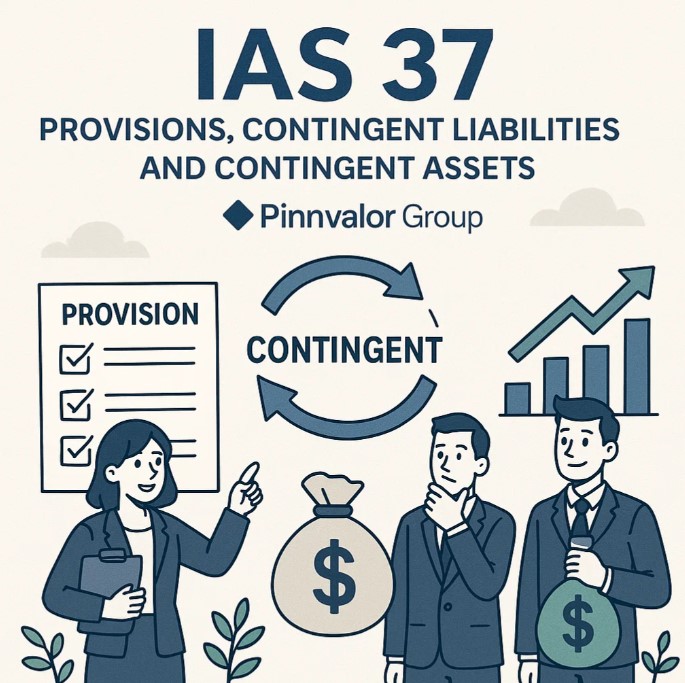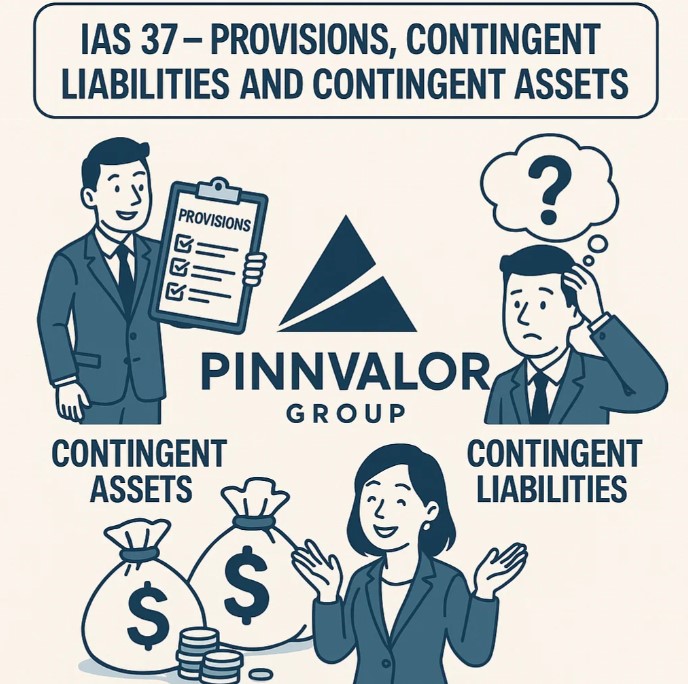
IAS 37 – Provisions, Contingent Liabilities and Contingent Assets: Navigating Uncertainties in Financial Reporting
In the intricate world of financial reporting, uncertainty is a constant companion. Whether it's a pending lawsuit, a potential asset recovery, or future obligations, businesses often grapple with events that are probable but not yet certain. That’s where IAS 37 – Provisions, Contingent Liabilities and Contingent Assets plays a critical role under the IFRS framework.
Is your reporting transparent enough to handle uncertainty?
A provision today prevents a shock tomorrow. Know when to recognize and when to disclose — that’s the power of IAS 37.
🔍 What is IAS 37?
IAS 37 provides the accounting framework for dealing with provisions, contingent liabilities, and contingent assets. It ensures that financial statements properly reflect a company’s potential obligations and uncertain future benefits or losses, promoting transparency and consistency in reporting.
🎯 Objective of IAS 37
The primary objective of IAS 37 is to define the recognition criteria and measurement bases for:
- Provisions – Present obligations with uncertain timing or amount.
- Contingent liabilities – Possible obligations that may arise depending on future events.
- Contingent assets – Potential assets dependent on the outcome of uncertain events.
The goal is to avoid hidden liabilities or overstatement of assets, thus fostering reliable financial disclosures.
📘 Key Definitions
1. Provision
A provision is a present obligation (legal or constructive) arising from a past event, where the settlement is expected to result in an outflow of economic resources. The amount and timing of the obligation are uncertain.
2. Contingent Liability
A possible obligation that arises from past events, the existence of which will be confirmed only by future events not within the company’s control. It is not recognized but disclosed unless the probability of outflow is remote.
3. Contingent Asset
A possible asset that arises from past events, confirmed only by uncertain future events. Like contingent liabilities, these are not recognized until the realization of income is virtually certain.
✅ Recognition Criteria
When is a Provision Recognized?
A provision must be recognized when all the following conditions are met:
- There is a present obligation from a past event.
- It is probable that an outflow of resources will be required.
- The amount can be estimated reliably.
If any of these criteria are not met, it is instead treated as a contingent liability.
🧮 Measurement of Provisions
IAS 37 requires provisions to be measured at the best estimate of the expenditure required to settle the obligation at the reporting date. This could be:
- Expected value – a weighted average of possible outcomes (useful for large populations).
- Most likely outcome – used when there is a single obligation or limited range of outcomes.
If the impact of time value is material, the provision should be discounted using a pre-tax discount rate reflecting current market assessments.

📊 Disclosures
Entities must disclose for each class of provision:
- Carrying amount at the beginning and end of the period
- Additional provisions made
- Amounts used during the period
- Unused amounts reversed
- Description of the nature, uncertainties, assumptions, and expected timing
🔄 Contingent Liabilities – Disclosure, Not Recognition
Contingent liabilities are disclosed unless the possibility of outflow is remote. They provide insights into potential future costs that are uncertain and outside the company’s control.
🌟 Contingent Assets – Hope, Not Yet Reality
Contingent assets are disclosed only when an inflow of benefits is probable. However, they are not recognized in the financial statements until the income becomes virtually certain.
📌 Practical Examples
- Provision: Warranty obligations, decommissioning liabilities, restructuring costs.
- Contingent Liability: Pending lawsuits where the outcome is uncertain.
- Contingent Asset: A claim filed against a third party where the receipt of compensation is probable but not confirmed.
⚖️ Recent Developments & Amendments
The IASB issued amendments to IAS 37 regarding the cost of fulfilling a contract, effective from 2022. These changes clarify that the cost includes both:
- Incremental costs (e.g., direct labor and materials)
- Allocation of other costs directly related to contract fulfillment
📌 Conclusion
IAS 37 is essential in ensuring companies do not hide obligations or overstate assets, especially in uncertain conditions. It brings clarity, prudence, and transparency to financial statements – helping stakeholders make more informed decisions.
As business risks evolve, so does the interpretation of obligations and contingencies. Accountants and auditors must maintain professional judgment and rigor in applying IAS 37 to truly reflect the economic reality.
